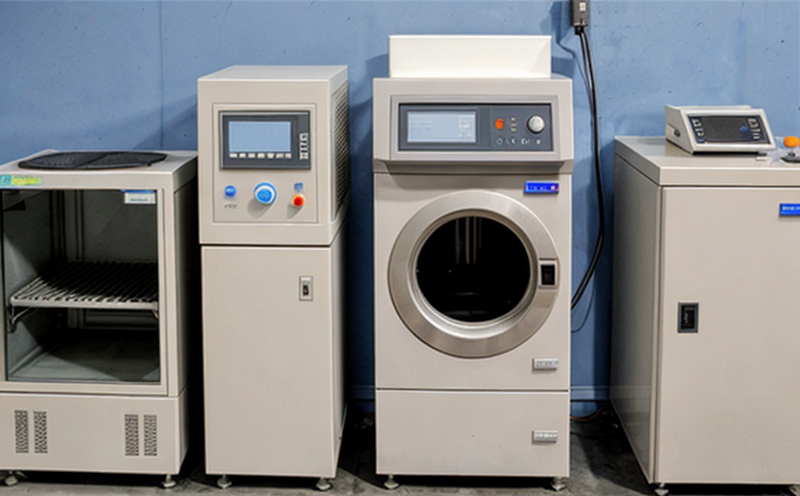ISO 23155 Pore Structure Influence on Solubility of Nanoceramics
The testing and evaluation of nanomaterials, particularly their dispersion and solubility characteristics, are critical for ensuring the safety, efficacy, and performance of products across various industries. ISO 23155 provides a standardized approach to understanding how pore structure influences the solubility of nanoceramics, which is essential in fields like pharmaceuticals, electronics, and environmental science.
Understanding the relationship between pore structure and solubility is particularly important for nanoceramics due to their unique properties. Nanoceramics often possess a high surface area-to-volume ratio, making them highly reactive with their environment. This property can lead to increased dissolution rates or unwanted chemical reactions, which must be controlled in applications such as drug delivery systems, coatings, and composite materials.
The testing protocol outlined in ISO 23155 involves several key steps. Specimen preparation is critical; nanoceramic particles are dispersed into a suitable solvent according to the specified method. The dispersion is then analyzed using techniques like X-ray diffraction (XRD) and scanning electron microscopy (SEM) to characterize the particle morphology and size distribution. The pore structure of the nanoceramics is also evaluated, often through Brunauer-Emmett-Teller (BET) surface area analysis.
The solubility test itself involves measuring the amount of nanoceramic dispersed in a solvent over a defined period. This can be done using gravimetric methods or spectrophotometric techniques depending on the nature of the material and the desired outcome. The results are compared against baseline data obtained under controlled conditions to assess any significant changes due to pore structure variations.
The importance of this testing cannot be overstated, especially for industries where the precise control over nanomaterial behavior is paramount. For instance, in pharmaceuticals, understanding how pore structure affects solubility can lead to more effective drug delivery systems. In electronics, it ensures that materials used in circuitry or coatings do not degrade prematurely.
The following table highlights some of the key industry applications where ISO 23155 testing is particularly relevant:
| Industry | Potential Impact |
|---|---|
| Pharmaceuticals | Optimized drug delivery systems |
| Electronics | Stable and durable coatings |
| Environmental Science | Safe disposal of nanomaterials |
The testing process is not without challenges. Specimen preparation must be meticulously controlled to ensure accurate results, and the choice of solvent can significantly impact the outcome. This is why adherence to ISO 23155 standards is crucial for reliable data.
Given the complexity of nanomaterials, it's important to note that the testing protocol should not only focus on solubility but also consider other factors such as stability and reactivity in different environments. The following table provides a summary of some key parameters:
| Parameter | Description |
|---|---|
| Pore Volume | The total volume of pores within the nanoceramic. |
| BET Surface Area | The specific surface area determined by BET analysis. |
| Particle Size Distribution | A measure of particle size variation, which affects dispersion and solubility. |
In conclusion, ISO 23155 provides a robust framework for understanding how pore structure influences the solubility of nanoceramics. This knowledge is vital for ensuring that these materials are used safely and effectively across various industries.
Industry Applications
The ISO 23155 pore structure influence on solubility testing of nanoceramics has wide-ranging applications in several industries:
- Pharmaceuticals: Optimizing drug delivery systems by controlling the dissolution rate.
- Electronics: Ensuring stable and durable coatings for circuitry and other components.
- Environmental Science: Providing data for safe disposal of nanomaterials, reducing environmental impact.
The standardized testing ensures that the properties of nanoceramics are accurately characterized, leading to safer and more effective products. This is particularly important in sectors where precision and consistency are critical.
Quality and Reliability Assurance
Ensuring the quality and reliability of nanomaterials through ISO 23155 testing involves several key aspects:
- Consistent Specimen Preparation: Ensures that all samples are treated uniformly, which is critical for accurate comparisons.
- Standard Solvent Selection: The choice of solvent can significantly affect the results. Standardization ensures reproducibility.
- Regular Calibration: Instruments used in the testing process must be regularly calibrated to maintain accuracy.
The use of ISO 23155 in quality and reliability assurance helps industries meet stringent regulatory requirements, ensuring that products are safe for their intended use. By adhering to these standards, companies can build trust with consumers and regulators alike.
Environmental and Sustainability Contributions
The testing of nanoceramics using ISO 23155 not only contributes to product quality but also has significant environmental benefits. By accurately determining the solubility and stability of these materials, industries can make informed decisions about their use and disposal.
For instance, understanding how pore structure affects solubility helps in designing products that minimize leaching into the environment. This is particularly important for nanomaterials used in consumer goods or outdoor applications. By ensuring that nanoceramics remain stable and do not degrade prematurely, industries can reduce waste and environmental pollution.
Moreover, the testing process itself contributes to sustainability by promoting the use of standardized methods that are reliable and reproducible. This ensures that industries are making informed decisions based on accurate data, leading to more responsible practices.





